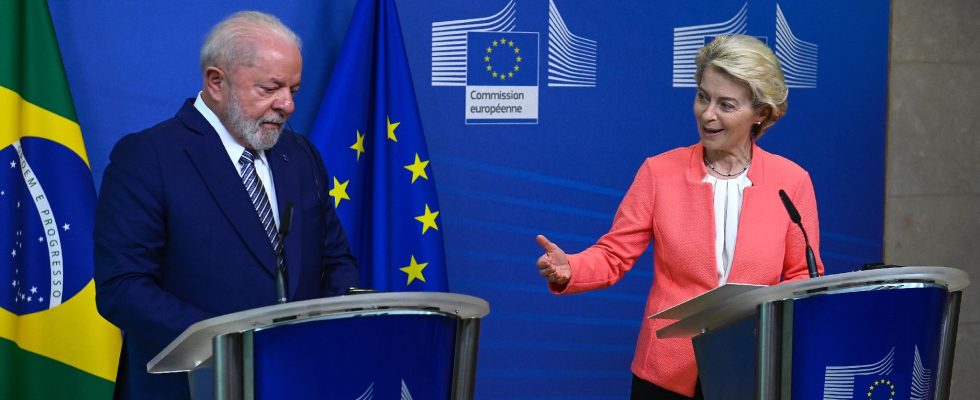It hadn’t happened for eight years. The leaders of the countries of the European Union are meeting their counterparts from Latin America and the Caribbean on July 17 and 18 for the third EU-Celac summit (European Union – Community of Latin American and Caribbean States). The opportunity for the States present to “further strengthen” their partnership, to prepare for “equitable ecological and digital transitions” and to “demonstrate a common attachment to respect for the international order”, details the European Council.
But the discussions are likely to be tense. Since the first two summits, in 2013 and 2015, the European Union and CELAC have had a series of crises. Growth and investment flows have diminished and China has taken advantage of this to become the region’s main trading partner. Today, Europe is trying to regain its place. But the summit “is not going to be easy”, conceded Alicia Barcena, Mexican Minister of Foreign Affairs. Between war in Ukraine and trade agreements, The Express summarizes the main differences between the two parties.
The war in Ukraine
“Our goal is for all the countries in the region to support Ukraine,” assured the Elysée. The 33 Latin American and Caribbean countries must provide “minimum support to the Ukrainian government in their declarations, to point out the violations of international law with which the country is confronted”. Problem: for Celac, the war in Ukraine remains a distant conflict. She was very divided about a joint declaration with the Europeans who pleaded to mention the Russian invasion.
Within Celac itself, it is difficult to find a common position. Venezuela and Cuba are allies of Moscow. Brazil refuses to supply arms to kyiv and to impose sanctions on Russia. President Lula has repeatedly created controversy by asserting that the responsibilities for the conflict were shared, even though he condemned the invasion of Ukraine. Uruguay and Chile criticized Moscow’s actions. But the region as a whole remains discreet, preferring neutrality.
Trade agreements
The European Union is “only” Latin America’s fifth largest trading partner, while China is in first place. Europe is now trying to forge new links with the region. In June, European Commission President Ursula von der Leyen embarked on a tour that took her to Brazil, Argentina, Chile and Mexico. She then announced a reinforcement of European investments to 10 billion euros, through the “Global Gateway” strategy intended to counter the influence of the Chinese program of the “New Silk Roads”.
On the other hand, the free trade agreement with Mercosur remains at a standstill. This text has been negotiated for twenty years with Brazil, Argentina, Uruguay and Paraguay. Concluded in 2019, it has still not been ratified. The European Union is asking for more environmental commitments, which for the moment is not accepted by Mercosur. No breakthrough is expected during the summit but Ursula von der Leyen hopes for ratification by the end of the year.
Lithium
Another challenge for Europeans: lithium. This ore, essential for the manufacture of electric car batteries, is an essential key to the European Union’s decarbonization strategy. This plans to ban the sale of new cars with thermal engines from 2035.
However, lithium production takes place mainly in Latin America. Argentina forms with Bolivia and Chile the “lithium triangle”, with nearly 56% of the world’s reserves. Ursula von der Leyen has thus announced the signing of a memorandum of understanding with Argentina. Another must also be signed on July 18 with Chile, in the presence of President Gabriel Boric. As for Bolivia, local authorities announced at the end of June that China and Russia would invest $1.4 billion to open two lithium mines in the country.
